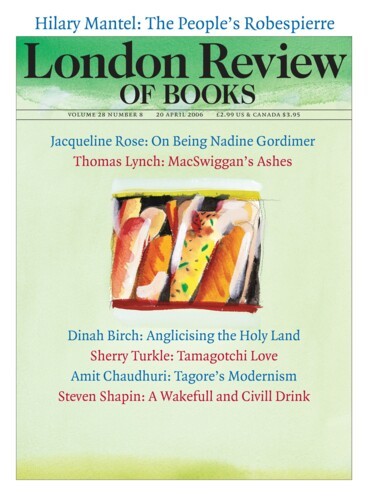When Men Started Doing It: At the Grill Station
Steven Shapin, 17 August 2006
Well over half a billion books about food and wine are sold in the States every year and the circulation of glossy food and wine magazines goes up and up: Bon Appetit (1.3 million), Food and Wine and Gourmet (both about a million). By comparison, the circulation of the New Yorker was just short of a million in 2004. And now its former fiction editor Bill Buford has provided one of the most evocative testaments to our – and his – current obsession: Heat is a record of several years spent in willing servitude to some of the great chefs, and food artisans, of Manhattan and Italy. He wants to know what it’s like; he needs to know how to do what they do. He wants the magic, and he knows that it can’t be had through the reading of books and the watching of television shows, but only through the laying on of hands.





